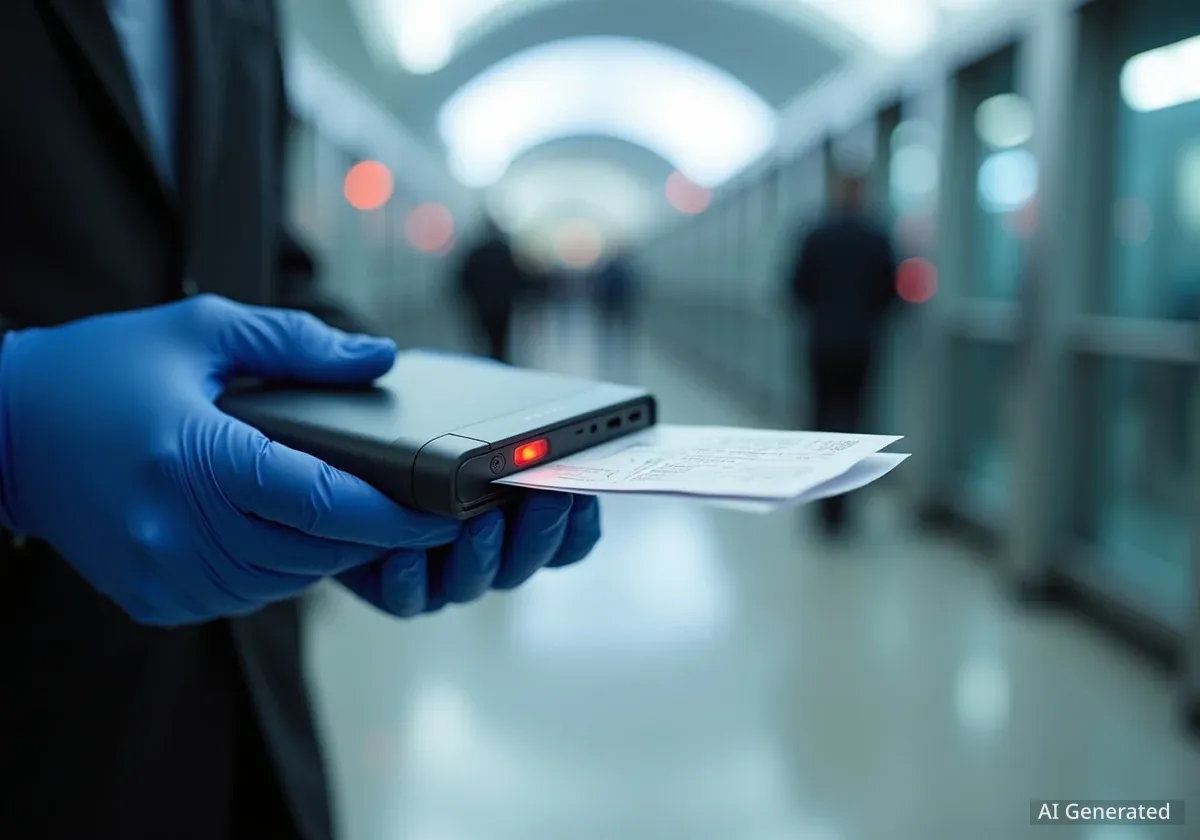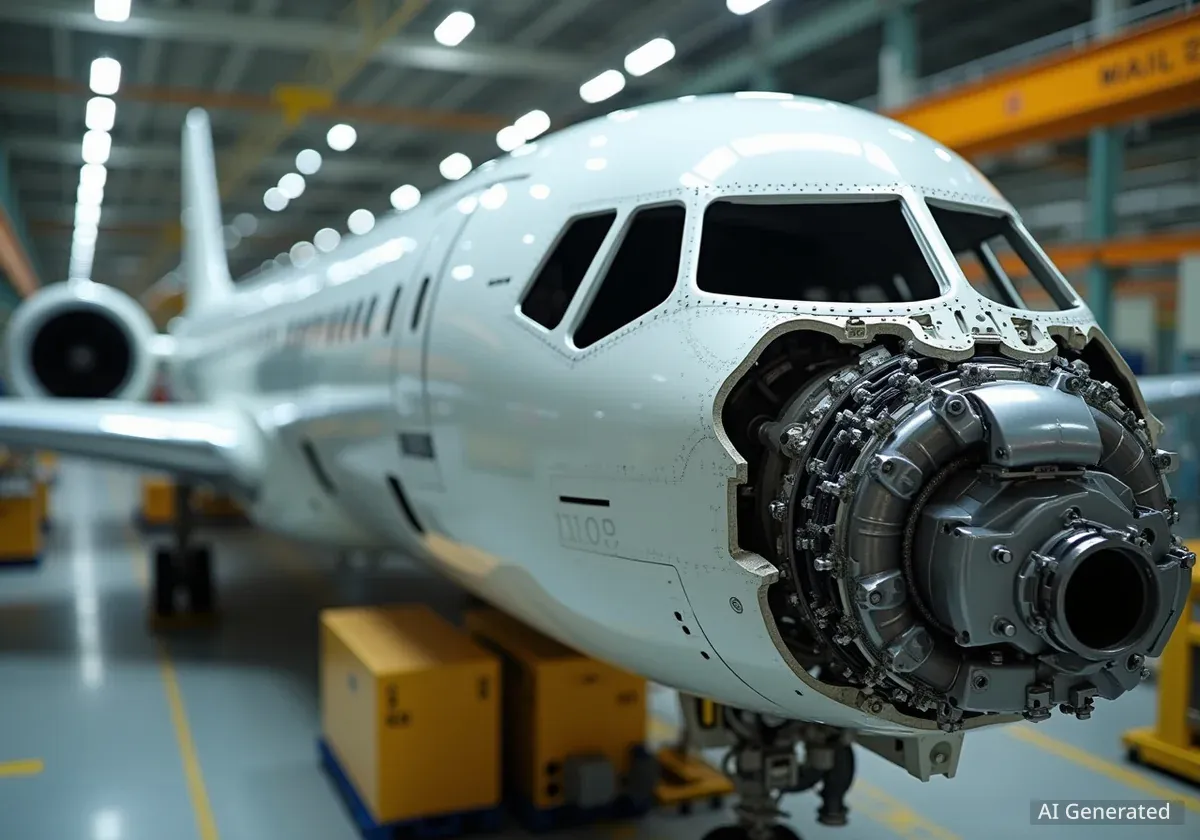Airlines are implementing stricter regulations for carrying power banks on flights, with some carriers banning their use entirely due to significant fire safety risks associated with lithium-ion batteries. Passengers are now being advised to check specific airline rules and inspect their devices for damage before traveling to prevent in-flight emergencies.
Key Takeaways
- Power banks containing lithium-ion batteries are prohibited in checked luggage on most major airlines.
- Several carriers, including Emirates and Vietnam Airlines, have banned the use of power banks during flights.
- The primary danger is 'thermal runaway,' a process where damaged batteries can overheat, catch fire, and release toxic fumes.
- A swollen, bulging, or physically damaged power bank is a critical warning sign and should not be brought on a plane.
Growing Restrictions on In-Flight Electronics
Travelers who rely on power banks to keep their devices charged are facing new limitations. A growing number of international airlines have updated their policies, citing safety concerns over the lithium-ion batteries these portable chargers contain. The primary rule, now widely enforced, is that power banks must be carried in cabin baggage, not placed in checked luggage.
This regulation is designed to mitigate the risk of fires in the cargo hold, where a blaze could go undetected. If a battery issue occurs in the cabin, flight crews can respond to it immediately. However, some airlines are taking precautions a step further. Carriers such as Emirates, Vietnam Airlines, and Vietjet Air have prohibited the use of power banks at any time during their flights, requiring them to remain stowed away.
Understanding the Risk: Lithium-Ion Batteries
Lithium-ion batteries are popular because they can store a large amount of energy in a compact size. However, if they are damaged, short-circuited, or poorly manufactured, they can become unstable. This can lead to a dangerous chemical reaction known as thermal runaway.
Expert Warnings on Damaged Devices
Safety experts are urging passengers to be vigilant about the condition of their power banks. According to Giuseppe Capanna of Electrical Safety First, a leading safety charity, the physical state of a power bank is a key indicator of its safety.
"Lithium-ion batteries can hold a sizable amount of energy in a very small space, and can pose a serious fire risk if they become damaged or are manufactured to a substandard level."
The most significant red flag is any change in the device's shape. A power bank that is bulging, swelling, or appears deformed should be considered extremely dangerous.
The Danger of a Swollen Battery
A swollen battery case is a clear sign of internal failure. This swelling is caused by a buildup of gas inside the battery cell, which can happen due to overcharging, damage, or a manufacturing defect. This internal pressure dramatically increases the risk of a fire or explosion.
Giuseppe Capanna states, "Swollen power banks are a sign of an internal failure and it may mean the device is at serious risk of catching fire, sparking a dangerous process called thermal runaway, where toxic fumes are expelled and a fire occurs."
If you notice any such damage while preparing for a trip, experts advise against bringing the device. It should be disposed of safely at a designated electronics recycling center that handles batteries, not in regular household trash.
Passenger Guidelines for Safe Travel with Power Banks
To ensure a safe journey for everyone, passengers should adhere to a set of clear guidelines when traveling with portable chargers. Following these rules minimizes risk and helps prevent dangerous incidents.
- Always Carry-On: Never pack power banks or any device with a lithium-ion battery in your checked luggage. They must be kept in your carry-on bag.
- Inspect Before You Pack: Before every trip, carefully check your power bank for any signs of damage, such as swelling, cracks, or deformation. Do not travel with a damaged device.
- Purchase from Reputable Retailers: Buy power banks from well-known and trusted brands and retailers to reduce the risk of purchasing a poorly manufactured or counterfeit product.
- Monitor for Recalls: Stay informed about any product recalls or safety notices issued for your specific model of power bank.
- Protect from Elements: Keep your power bank away from direct heat sources, like sunlight, and prevent it from getting wet.
- Report Issues Immediately: If you notice your power bank becoming unusually hot, smoking, or changing shape during a flight, alert the cabin crew without delay.
Real-World Incidents Underscore the Danger
The potential for disaster is not just theoretical. Several in-flight incidents have demonstrated the serious threat posed by faulty power banks. In one widely reported event, a China Southern Airlines flight had to make an emergency return shortly after takeoff.
The incident on flight CZ6850 from Hangzhou to Shenzhen occurred when a passenger's power bank ignited in an overhead locker just 15 minutes into the flight. Video from the cabin showed thick smoke filling the aisle as passengers reacted with alarm. A flight attendant quickly used a fire extinguisher to control the fire, which involved both a power bank and a camera battery.
This event and others like it serve as a stark reminder of why airline regulations are becoming stricter. The swift action of the cabin crew prevented a more serious outcome, highlighting the importance of keeping these devices in the cabin where they can be monitored, rather than in the unattended cargo hold.





